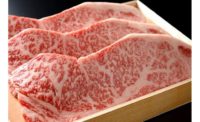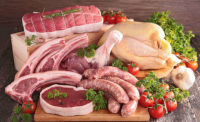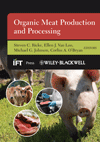Charcuterie trend evolves as consumers look for cleaner ingredients
Dietz & Watson VP of brand strategy shares insights on the category.

Photo credit: Dietz & Watson
Keto charcuterie board
Charcuterie boards are establishing themselves as a versatile and customizable meal solution for any eating occasion that can cater to almost any taste, taking their place alongside such reigning American favorite foods as burgers, pizza and tacos.
Even Pizza Hut is getting on board with the trend.
Like other categories of meat products, charcuterie boards also are being influenced by innovations aiming to meet consumers' demand for fewer ingredients and clean-label products.
Philadelphia-based Dietz & Watson Inc., a producer and distributor of deli meats, cheeses, and other specialty food products, is focusing on consumers looking to avoid what they consider over-processed meats and artificial ingredients in favor of minimally processed, clean-label deli meats with innovative flavors.
Lauren Eni Canseco, CMO and executive vice president of brand strategy for Dietz & Watson, shares some insights on emerging consumer trends in the charcuterie category.
The charcuterie category has been enjoying popularity for a while now — what emerging trends are fueling innovation?
Lauren Eni Canseco: We’re seeing the content of charcuterie boards continue to evolve. Consumers are looking for cleaner ingredients when it comes to the deli meats and cheeses on their boards and opting for more unique flavor profiles. Increasingly, consumers are returning to comfort foods, along with a desire to explore new and exciting flavors from the safety of a familiar format.
How is consumer demand for clean-label meat products shaping the charcuterie category?
Lauren Eni Canseco: Consumers have an increased desire to know what is in their food and its source. These desires are driving demand for clean-label meat products that also fit dietary preferences. With numerous recalls in the food sector, consumers have an increased interest in transparency of ingredients in the products they consume.
How does foodservice demand for charcuterie products compare with retail?
Lauren Eni Canseco: The demand for charcuterie products in foodservice and retail is growing but driven by different consumer needs. In foodservice, restaurants, wine bars, and upscale casual dining establishments are making charcuterie boards a menu staple, catering to diners seeking premium, shareable experiences. The emphasis in foodservice is on premiumization, unique flavor profiles, and bulk sourcing to meet the needs of high-throughput kitchens.
On the retail side, the charcuterie category is expanding beyond special occasions into everyday meals and snacking. Consumers are looking for prepackaged, grab-and-go options like single-serve charcuterie snack packs and DIY kits, aligning with trends toward convenience and healthier eating. Shoppers also prioritize clean-label ingredients, with demand rising for minimally processed, high-protein, and low-carb options. Major retailers and club stores are increasing their premium charcuterie offerings, making gourmet selections more accessible
What marketing/merchandising approaches for charcuterie products are resonating with consumers?
Lauren Eni Canseco: Transparency, quality and choice are what resonate most with our consumers. From a marketing perspective, we focus on our transparent ingredient label and production from start to finish.
What untapped opportunities does Dietz & Watson see for charcuterie products?
Lauren Eni Canseco: Dietz & Watson sees significant untapped opportunities in expanding charcuterie products beyond traditional boards and into everyday eating occasions. While charcuterie has long been associated with entertaining, there’s growing potential to position premium meats and cheeses as an accessible, versatile option for casual meals, on-the-go snacking, and even healthier lifestyle choices.
Looking for a reprint of this article?
From high-res PDFs to custom plaques, order your copy today!
.png?height=96&t=1647275041&width=96)








